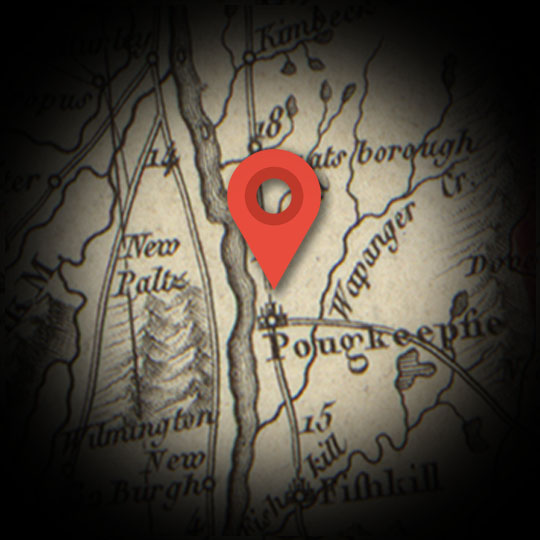POUGHKEEPSIE
Explore
A thriving county seat approximately halfway between the city of Albany and New York City itself, Poughkeepsie is a town Alexander Hamilton had many occasions to pass through or spend time in during his adult life. When New York declared its independence from Great Britain, it established its capital first at nearby Kingston. The legislature and governor had to begin sitting at Poughkeepsie, however, after Kingston was burned by Redcoats on October 13, 1777. Hamilton’s father-in-law and ally, Philip Schuyler, was a member of the state government when it convened in Poughkeepsie and drafted an important resolution calling for a convention to amend the Articles of Confederation. Hamilton was with Schuyler in Poughkeepsie, and may have helped author the resolution, in July, 1782.
Hamilton’s most crucial Poughkeepsie interlude commenced on June 19, 1778. Poughkeepsie was hosting the state’s convention to consider ratification of the U.S. Constitution. Though Hamilton had played only a small role in drafting what would become the supreme law of the land, he had made himself a powerplayer in the ratification effort—that is, whether enough states would adopt the new model of government to put it into operation or not. The centerpiece to this campaign was his authoring the lion’s share of the Federalist Papers.
Although several states ratified the Constitution enthusiastically, New York was poised to be the site of a contentious showdown. There were influential “antifederalist” blocs of power within the state, not the least of which in the person of the Empire State’s powerful governor, George Clinton. Hamilton worked furiously to build support for the document as the delegates scoured and picked over its plan for taxation, representation in the House and Senate, and demanded amendments. Celebration of Independence Day came and went with no decision, and the Constitution’s opponents even tried adjourning early, to scupper any momentum the federalists had. But Hamilton gave a speech that helped his allies wriggle out of that probably disastrous eventuality, and by the end of the convention on July 24 had managed to get the Constitution ratified, 32 for, 22 against.

TIME FRAME:
1777-1778
